Mount Bowlen
Mount Bowlen is located on the border of Alberta and British Columbia and forms part of the Valley of the Ten Peaks. It was named in 1953 after John J. Bowlen, a native of Prince Edward Island, successful Alberta rancher, honorary chief of the Blackfoot, and a Lieutenant Governor of Alberta. Its former name was "Yamnee", which translates to the number 3 in the local Nakoda (Stoney) language.[1][3]
| Mount Bowlen | |
|---|---|
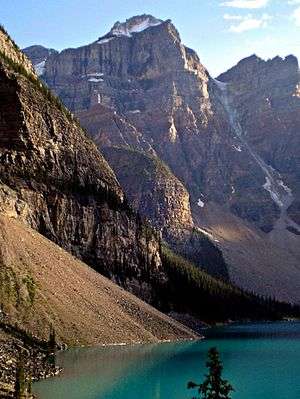 Mount Bowlen | |
| Highest point | |
| Elevation | 3,206 m (10,518 ft) [1] |
| Prominence | 170 m (560 ft) |
| Listing | Mountains of Alberta Mountains of British Columbia |
| Coordinates | 51°18′06″N 116°11′22″W [2] |
| Geography | |
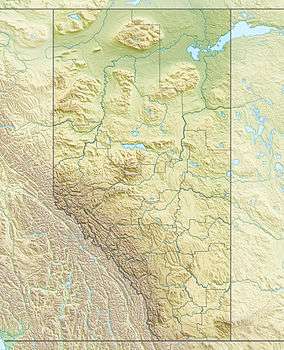 Mount Bowlen Location in Alberta and British Columbia 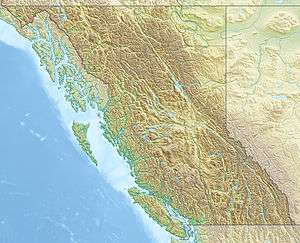 Mount Bowlen Mount Bowlen (British Columbia) | |
| Country | Canada |
| Provinces | Alberta and British Columbia |
| National Parks | Banff and Kootenay |
| Parent range | Bow Range |
| Topo map | NTS 82N/08[2] |
| Climbing | |
| First ascent | 1901 G.T. Little, Charles S. Thompson, G.M. Weed, Hans Kaufmann[1] |
Geology
The mountains in Banff Park are composed of sedimentary rock laid down during the Precambrian to Jurassic periods.[4] Formed in shallow seas, this sedimentary rock was pushed east and over the top of younger rock during the Laramide orogeny.[5]
Climate
Based on the Köppen climate classification, the mountain has a subarctic climate with cold, snowy winters, and mild summers.[6] Temperatures can drop below -20 C with wind chill factors below -30 C in the winter.
See also
- List of peaks on the British Columbia-Alberta border
References
- "Mount Bowlen". PeakFinder.com. Retrieved 2019-08-20.
- "Mount Bowlen". BC Geographical Names. Retrieved 2013-06-29.
- Boles, len W.; Laurilla, Roger W.; Putnam, William L. (2006). Canadian Mountain Place Names. Vancouver: Rocky Mountain Books. pp. 47–48. ISBN 978-1-894765-79-4.
- Belyea, Helen R. (1960). The Story of the Mountains in Banff National Park (PDF). parkscanadahistory.com (Report). Ottawa: Geological Survey of Canada. Archived (PDF) from the original on 2015-10-02. Retrieved 2019-09-13.
- Gadd, Ben (2008). "Geology of the Rocky Mountains and Columbias". Missing or empty
|url=(help) - Peel, M. C.; Finlayson, B. L. & McMahon, T. A. (2007). "Updated world map of the Köppen−Geiger climate classification". Hydrol. Earth Syst. Sci. 11: 1633–1644. ISSN 1027-5606.
Further reading
- Dave Birrell, 50 Roadside Panoramas in the Canadian Rockies, P 87
- Western Canada, P 280
- Paul Zizka, Summits and Starlight: The Canadian Rockies
Gallery
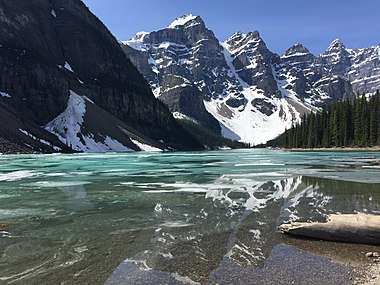 Mount Bowlen centered and reflected in Moraine Lake
Mount Bowlen centered and reflected in Moraine Lake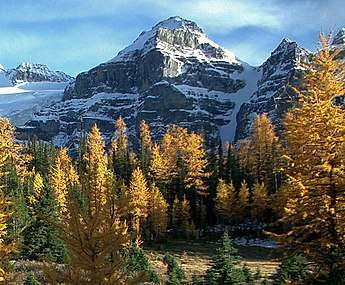 Mount Bowlen seen from Larch Valley
Mount Bowlen seen from Larch Valley